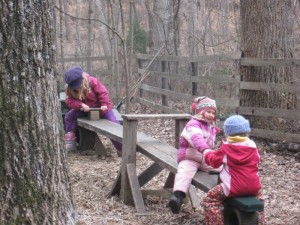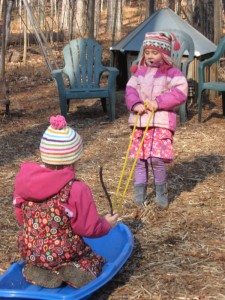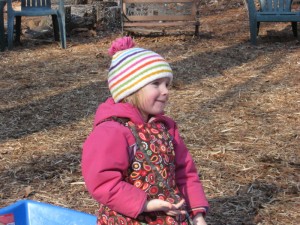Your Family Culture can be imagined as a five-pointed star: the first four points ( the arms and legs of the star ) make a foundation for Discipline, the “head” of the star. Think about it like this:
Point One: Family Rhythm ~~ Create daily and weekly rhythms that are simple, slow and nourishing. Slow down and let your whole family b-r-e-a-t-h-e! Set your goal to celebrate yearly festivals in a conscious, non-rushed or media-influenced way.
Point Two: Family Work and Family Play ~~ Model for your child work-sharing: show them the “how-tos” in accomplishing the work-load a family requires. Remember: slowly over the years, hand more and more responsibility to them, as they develop more capacity. But don’t forget that families need to Play! Think of weekly play-together days and yearly get-aways for play!
Point Three: Children’s Art and Stories ~~ Give your child plenty of time and space for artistic exploration. No, you don’t need to enroll her in art classes, just make simple open-ended art materials available for her self expression: crayons ( buy 100% organic beeswax Filana crayons! ) paper, watercolor paint, modeling material, scissors, tissue paper, glue; you get the idea? And remember good stories are nourishment for the imagination, just like good food nourishes the body!
Point Four: Child’s Play ~~ Be sure your indoor play-space is full of imaginative possibilities. Choose toys and play materials that are open-ended. If the toy “plays itself” or talks to your child, it is not open-ended enough. Think of old-fashioned toys: wooden blocks, simple soft dolls, child sized kitchen toys, dress-ups, wooden wagons and plenty of empty baskets. Empty boxes, as we all know, are the very best! Be sure your outdoor space has plenty of exploratory possibilities!
Point Five: Discipline ~~ When all of the above are well taken care of, many discipline problems disappear. What to do when all is in-order and discipline is still needed? The watchwords here are Firm and Kind! Use simple non-emotional statements. Breathe slowly, settle into your heart-space, speak slowly. Allow yourself to “slip inside your child’s skin”, to understand the situation from their point of view. With this insight, firmly and kindly insist. You can do this, and you will love it!
I will be at The River Valley Waldorf School in Upper Black Eddy, Pennsylvania this Friday night talking about Family Culture. Join us there! www.rivervalleyschool.org 610-982-5606














